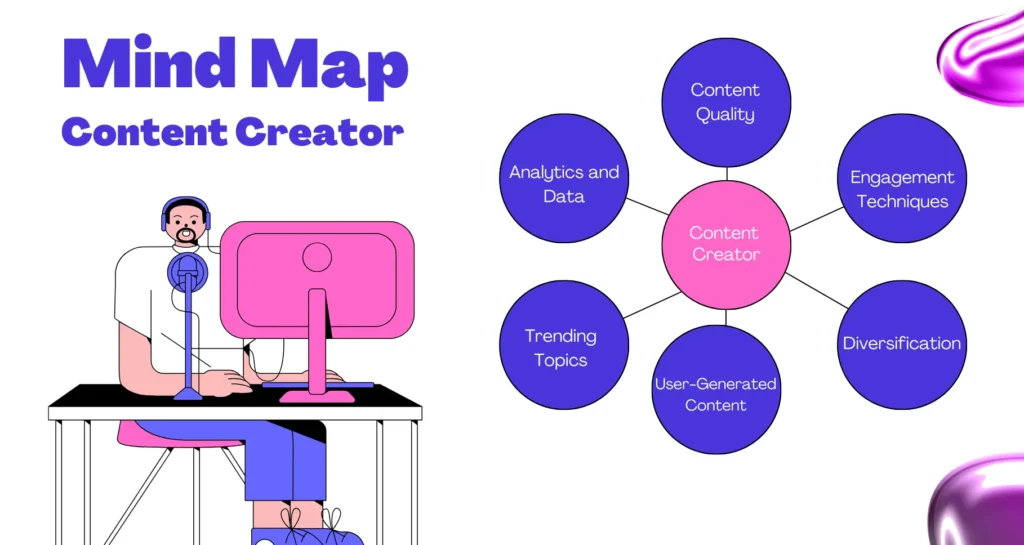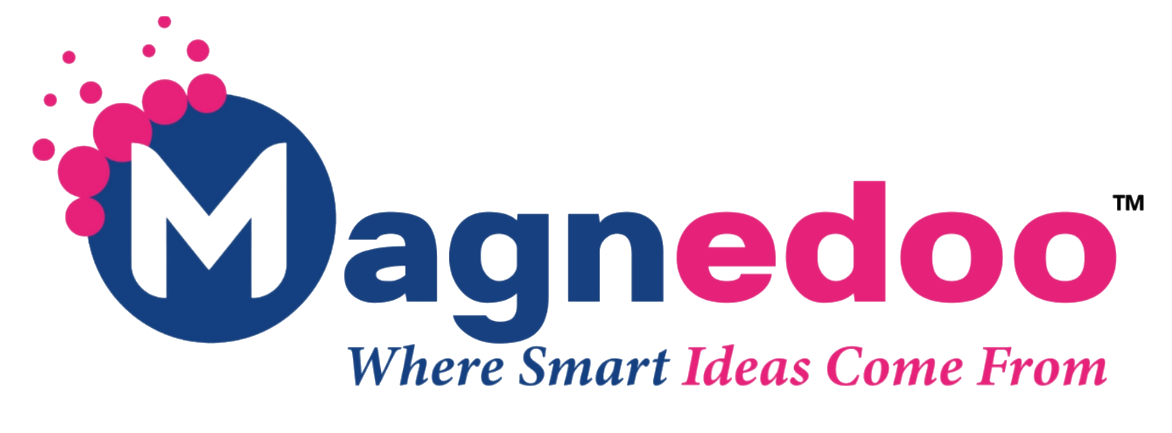/*! elementor – v3.16.0 – 12-09-2023 */
.elementor-heading-title{padding:0;margin:0;line-height:1}.elementor-widget-heading .elementor-heading-title[class*=elementor-size-]>a{color:inherit;font-size:inherit;line-height:inherit}.elementor-widget-heading .elementor-heading-title.elementor-size-small{font-size:15px}.elementor-widget-heading .elementor-heading-title.elementor-size-medium{font-size:19px}.elementor-widget-heading .elementor-heading-title.elementor-size-large{font-size:29px}.elementor-widget-heading .elementor-heading-title.elementor-size-xl{font-size:39px}.elementor-widget-heading .elementor-heading-title.elementor-size-xxl{font-size:59px}
Evolving Social Media Algorithms: Strategies for Content Creators and Marketers
Social Media
Facebook
Twitter
LinkedIn
In the fast-paced world of digital marketing, the phrase “Evolving Social Media Algorithms” carries immense weight. It represents the ever-changing landscape that content creators and marketers navigate daily, where the rules of engagement are in constant flux. This blog post delves into the heart of this dynamic environment, offering insights and strategies for those seeking to thrive amidst the algorithmic shifts. Social media algorithms, the complex mathematical equations determining what content appears on users’ feeds, are the secret sauce of platforms like Facebook, Instagram, Twitter, and TikTok.
Understanding them and adapting to their changes is crucial for anyone aiming to make an impact in the digital realm.This article is your compass in this ever-shifting digital landscape. We’ll explore why these algorithms change and how content creators and marketers can leverage this knowledge. From top-level keywords to community building, from timing strategies to the power of authenticity, we’ll equip you with the tools and insights needed to navigate and succeed in evolving social media algorithms. Join us as we decode the algorithms, one strategy at a time.
Cracking the Code: Winning with Evolving Social Media Algorithms
1. Understanding Social Media Algorithms and Top-Level Keywords
Social media algorithms are complex algorithms used by platforms like Facebook, Instagram, Twitter, and TikTok to determine which content appears in users’ feeds. These algorithms constantly evolve to enhance user experience and engagement. Understanding them is crucial for content creators and marketers. Top-level keywords play a vital role in this understanding. These broad, high-traffic keywords relate to a specific topic or industry. They serve as the foundation for content creation and SEO strategies.
/*! elementor – v3.16.0 – 12-09-2023 */
.elementor-widget-image{text-align:center}.elementor-widget-image a{display:inline-block}.elementor-widget-image a img[src$=”.svg”]{width:48px}.elementor-widget-image img{vertical-align:middle;display:inline-block} 
By integrating top-level keywords into their content, creators can increase the visibility of their posts in search results and social media feeds. To succeed in the digital landscape, aligning content with top-level keywords relevant to your niche is essential. This alignment improves search engine rankings and increases the chances of content being prioritized by social media algorithms, ultimately leading to higher engagement and visibility among your target audience.
2. Longtail keywords
Longtail keywords are specific and longer phrases that users enter into search engines to find precise information or solutions to their queries. These keywords typically contain three or more words and are more detailed and focused than top-level. Understanding and incorporating longtail keywords into content is essential for creators and marketers. Unlike broad top-level keywords, longtail keywords offer several advantages. They often have lower competition, making ranking higher in search results easier for content.
Additionally, they can attract highly targeted and motivated audiences who are more likely to convert or engage with the content. Content creators can tailor their articles, blog posts, or product descriptions to match their audience’s needs and interests by identifying and using relevant longtail keywords. This strategy improves search engine optimization and enhances the overall user experience, driving more qualified traffic and potential customers to websites and platforms.
3 . Algorithm Changes and Challenges
Social media platforms are constantly evolving, and one of the pivotal aspects of this evolution is the frequent changes made to their algorithms. These algorithms are the intricate formulas that determine what content users see on their feeds. Understanding algorithm changes’ dynamics and challenges is vital for content creators and marketers.
Why Algorithm Changes Occur:
- User Experience Enhancement: Platforms aim to provide the best user experience possible. Algorithm changes are often made to ensure users see the most relevant and engaging content.
- Combatting Spam: To prevent spammy or low-quality content from flooding users’ feeds, algorithms are adjusted to identify and reduce such content.
- Competitive Landscape: Platforms strive to stay competitive by introducing new features and capabilities, necessitating algorithm adjustments to accommodate these changes.
Challenges for Content Creators and Marketers:
- Adaptation: Keeping up with frequent algorithm changes can be challenging. Content creators and marketers need to stay informed and adapt their strategies accordingly.
- Visibility: Algorithm changes can impact the visibility of content. Maintaining high visibility becomes more challenging as competition increases.
- Engagement: Content must evolve to align with changing algorithmic preferences for engagement metrics like likes, shares, and comments.
- Consistency: Achieving consistent results can be challenging as algorithms fluctuate. This requires ongoing optimization and experimentation.
- Resource Allocation: Marketers may need to allocate resources for paid promotion or content adjustments to align with new algorithmic trends.
In essence, algorithm changes are integral to the social media landscape. While they present challenges, they also offer opportunities for those who can adapt effectively and understand how to leverage these changes to their advantage.
4. Strategies for Content Creators

Content creators play a pivotal role in the digital landscape, producing materials that engage and inform audiences across various online platforms. Their success hinges on their ability to craft strategies customized for their specific audience and chosen platforms. To thrive in this highly competitive arena, content creators must harness a combination of creativity, research, and audience understanding to produce content that truly resonates. Content creators employ strategies tailored to their target audience and platforms to excel in this competitive arena. Here are some key strategies that content creators can employ to maximize their impact:
a. Content Quality:
High-quality content is the foundation of success. Content creators must focus on producing valuable, informative, or entertaining material that resonates with their audience.
b. Engagement Techniques:
Encouraging user engagement is crucial. Strategies include asking questions, encouraging comments, and fostering discussions to create a community around the content.
c. Diversification:
Content creators should diversify their content formats. This includes incorporating videos, images, infographics, and written posts to cater to varying audience preferences.
d. Consistency:
Maintaining a consistent posting schedule helps build audience trust and anticipation. It ensures that followers know when to expect new content.
e. User-Generated Content (UGC):
Encouraging followers to create content related to the brand or topic can enhance engagement and authenticity.
f. Timing Strategies:
Understanding when the target audience is most active and posting at those times can boost visibility and engagement.
g. Trending Topics:
Staying updated with trending topics and incorporating them into content when relevant can increase visibility, as platforms often prioritize trending content.
h. Community Building:
Content creators should work on building a loyal and engaged community around their niche. Responding to comments and fostering connections among followers can be highly beneficial.
i. Adherence to Platform Guidelines:
Staying within the platform’s guidelines and avoiding engagement bait or spammy tactics is essential to maintain trust and avoid penalties.
j. Analytics and Data:
Regularly monitoring analytics and data is critical to understanding what works and what doesn’t. Content creators should use these insights to refine their strategies.
5. Strategies for Marketers
Marketers operate in a rapidly changing digital landscape where staying ahead of the curve is essential for success. Marketers employ strategies tailored to their target audience and platforms to navigate this dynamic environment and leverage evolving social media algorithms. Here are some critical strategies for marketers:
Audience Segmentation: Identifying and understanding the various segments within the target audience allows marketers to tailor their messaging and campaigns for maximum relevance and impact.

- Content Personalization: Creating personalized content based on user preferences and behavior can significantly boost engagement and conversion rates.
- Leveraging Evolving Algorithms: Keeping abreast of algorithm changes and adapting marketing strategies is crucial for maintaining visibility and engagement on social media platforms.
- Paid Promotion: Allocating a budget for paid advertising allows marketers to reach a broader and more targeted audience. Platforms often offer advanced targeting options for ads.
- A/B Testing: Experimenting with different ad creatives, copy, and targeting parameters helps identify what works best and optimize campaigns for better results.
- Data Analysis: Regularly analyzing marketing data and metrics allows marketers to measure the success of campaigns, make informed decisions, and refine strategies.
- Influencer Collaborations: Partnering with influencers or micro-influencers can help expand reach and credibility, especially when their content aligns with the brand or product.
- Real-Time Marketing: Capitalizing on trending topics and current events can increase visibility and engagement, as users are likelier to engage with timely content.
- Diversification of Content: Various content formats, such as videos, infographics, and written posts, can cater to different audience preferences and platforms.
- Timing Strategies: Posting content when the target audience is most active can improve visibility and engagement.
6. Timing, Trends, and User Behavior
The success of content creators and marketers on social media is greatly influenced by the timing of their posts, their ability to leverage current trends and a deep understanding of user behavior. These factors play a significant role in maximizing content’s reach, engagement, and impact. Here’s an explanation of each:
a. Timing:
Posting content at the correct times is crucial for reaching the largest and most engaged audience. Different social media platforms have varying peak activity hours. Marketers must analyze when their target audience is most active and schedule posts accordingly. This ensures that content appears in users’ feeds when they are more likely to see and engage with it.
b. Trends:
Capitalizing on trending topics, hashtags, or viral content can significantly boost visibility and engagement. Content creators and marketers should stay updated on current events, popular hashtags, and emerging trends within their niche. When relevant, integrating these trends into their content can help it go viral and attract a broader audience.
c. User Behavior:
Understanding how users behave on social media platforms is critical. This includes knowing their preferences, habits, and interactions with content. For instance, some users prefer video content, while others may engage more with written posts. By aligning content with user behavior, creators can better cater to their audience’s interests and preferences.
d. Analytics:
Utilizing analytics tools provided by social media platforms can offer valuable insights into user behavior. Marketers can track metrics like click-through rates, likes, shares, and comments to gauge the effectiveness of their timing and content strategies. This data can inform adjustments and optimizations.
7. Community Building and Authenticity
a. Community Building:
- Engagement and Interaction: It involves actively engaging with your audience by responding to comments and messages and fostering discussions around your content. This creates a sense of belonging and encourages people to become part of your online community.
- Shared Values: Community building often centers on shared values, interests, or goals. Content creators and marketers should align their content with the interests of their target audience to create a sense of kinship.
- User-Generated Content (UGC): Encouraging followers to create content related to your brand or niche can be a powerful community-building tool. It not only increases engagement but also showcases authenticity and trust.
b. Authenticity:
- Honesty and Transparency: Authenticity is about being true to your brand or persona. Content should reflect your genuine beliefs and values, and marketers should avoid being misleading or insincere.
- Consistency: Authenticity is also about consistency in messaging, voice, and branding. Your audience should recognize and trust your content and messaging across platforms.
- Vulnerability: Sharing personal or behind-the-scenes aspects of your journey can make your content more relatable and authentic. This vulnerability can foster deeper connections with your audience.
The synergy between community building and authenticity is powerful. Building a community around authentic content leads to trust and loyalty. When your audience feels a genuine connection, they are likelier to engage, share your content, and support your brand or cause. This can positively impact your visibility and success on social media platforms.
8. Measuring Success and Adaptation
In digital marketing and content creation, measuring success and adaptation are two critical processes that go hand in hand. Understanding how to evaluate the performance of your strategies and being prepared to adapt based on the results are essential for long-term success. Here’s an explanation of these key concepts:
a. Measuring Success:
- Key Performance Metrics (KPIs): Success is often quantified through engagement rates, click-through rates, conversion rates, and ROI (Return on Investment). These metrics provide concrete data on how well your content or marketing campaigns perform.
- Audience Growth: Measuring the growth of your audience or customer base is another indicator of success. Tracking the increase in followers, subscribers, or customers over time can reflect the effectiveness of your strategies.
- Content Performance: Analyzing which types of content resonate most with your audience, whether it’s videos, blog posts, or social media updates, can help determine the success of your content creation efforts.
- Sales and Conversions: Success often translates into increased business sales and conversions. Tracking these metrics can directly tie marketing efforts to revenue generation.
b. Adaptation:
- Iterative Improvement: Based on the data and insights gathered from measuring success, marketers and content creators should be willing to make adjustments. This might involve refining content strategies, trying different messaging approaches, or optimizing ad campaigns.
- A/B Testing: Experimentation through A/B testing allows you to compare different variables in your content or campaigns. This iterative process helps identify what works best and what needs improvement.
- Staying Current: In the rapidly changing digital landscape, adaptation also involves staying current with trends, technology, and algorithm changes. What worked yesterday might not work tomorrow, so staying informed is crucial.
- Feedback Integration: Listening to feedback from your audience or customers can inform adaptation efforts. Addressing their needs and concerns can lead to more successful strategies.
- Flexibility: Being flexible and open to change is essential. Adaptation may require pivoting to new platforms, embracing emerging technologies, or shifting marketing budgets based on performance.
Content creators and marketers can continually improve their strategies by regularly measuring success through relevant metrics and being willing to adapt based on the data and insights gathered. This iterative process is crucial in maintaining and increasing visibility, engagement, and success in the ever-evolving digital landscape.
Conclusion:
In the fast-paced world of digital marketing and content creation, adapting to evolving social media algorithms is not just a choice but a necessity. As explored throughout this article, these algorithms are the gatekeepers to audience visibility and engagement on platforms like Facebook, Instagram, Twitter, and TikTok. To thrive in this dynamic landscape, content creators and marketers must employ a strategic approach that blends creativity, data-driven insights, and adaptability. From understanding the intricacies of social media algorithms to leveraging top-level and longtail keywords, we’ve delved into strategies that can elevate your content game.
Engaging your audience, capitalizing on timing and trends, and building an authentic online community are the building blocks of success. Moreover, measuring success through key performance metrics and being open to adaptation based on data are fundamental practices in achieving long-term growth. The digital world is ever-changing, and those who can pivot, innovate, and stay attuned to their audience’s needs will be the true winners.
FAQs:
/*! elementor – v3.16.0 – 12-09-2023 */
.elementor-accordion{text-align:left}.elementor-accordion .elementor-accordion-item{border:1px solid #d5d8dc}.elementor-accordion .elementor-accordion-item+.elementor-accordion-item{border-top:none}.elementor-accordion .elementor-tab-title{margin:0;padding:15px 20px;font-weight:700;line-height:1;cursor:pointer;outline:none}.elementor-accordion .elementor-tab-title .elementor-accordion-icon{display:inline-block;width:1.5em}.elementor-accordion .elementor-tab-title .elementor-accordion-icon svg{width:1em;height:1em}.elementor-accordion .elementor-tab-title .elementor-accordion-icon.elementor-accordion-icon-right{float:right;text-align:right}.elementor-accordion .elementor-tab-title .elementor-accordion-icon.elementor-accordion-icon-left{float:left;text-align:left}.elementor-accordion .elementor-tab-title .elementor-accordion-icon .elementor-accordion-icon-closed{display:block}.elementor-accordion .elementor-tab-title .elementor-accordion-icon .elementor-accordion-icon-opened,.elementor-accordion .elementor-tab-title.elementor-active .elementor-accordion-icon-closed{display:none}.elementor-accordion .elementor-tab-title.elementor-active .elementor-accordion-icon-opened{display:block}.elementor-accordion .elementor-tab-content{display:none;padding:15px 20px;border-top:1px solid #d5d8dc}@media (max-width:767px){.elementor-accordion .elementor-tab-title{padding:12px 15px}.elementor-accordion .elementor-tab-title .elementor-accordion-icon{width:1.2em}.elementor-accordion .elementor-tab-content{padding:7px 15px}}.e-con-inner>.elementor-widget-accordion,.e-con>.elementor-widget-accordion{width:var(–container-widget-width);–flex-grow:var(–container-widget-flex-grow)}
1. What are social media algorithms, and why do they keep changing?
Social media algorithms are complex formulas used by platforms to determine which content users see in their feeds. They change to improve user experience and combat spam.
2. How can content creators adapt to constantly evolving algorithms?
Content creators can adapt by creating high-quality content, engaging with their audience, staying informed about algorithm changes, and experimenting with different strategies.
3. What are top-level keywords, and why are they essential for content creators and marketers?
Top-level keywords are broad, high-traffic keywords related to a specific topic. They are essential because they form the foundation for content creation and SEO strategies.
4. What are longtail keywords, and how do they benefit content creators?
Longtail keywords are specific, longer phrases that users enter into search engines. They benefit content creators by attracting highly targeted audiences with lower competition.
5. Why do social media platforms frequently update their algorithms?
Social media platforms update their algorithms to improve user engagement, combat spam, and stay competitive by introducing new features.
6. What strategies can marketers employ to leverage evolving algorithms for advertising and promotion?
Marketers can use strategies like paid promotion, A/B testing, real-time marketing, and data analysis to leverage evolving algorithms effectively.
7. How important is user behavior in social media marketing, and how can it be used to improve strategies?
User behavior is crucial, and marketers can use it by understanding when and how their audience engages with content, adapting content schedules, and tailoring content formats.
8. What role does authenticity play in building a loyal online community on social media?
Authenticity builds trust and loyalty among an audience. It fosters genuine connections and encourages engagement.
9. How can marketers measure the success of their social media campaigns and content strategies?
Marketers can measure success through key performance metrics like engagement rates, click-through rates, conversions, and audience growth.
10. What are some common challenges content creators and marketers face when adapting to algorithm changes?
Common challenges include:
- Keeping up with changes.
- Maintaining visibility.
- Adjusting content strategies.
- Allocating resources for adaptation
Reference Sites:
Certainly! Here are some reference websites related to the topic “Evolving Social Media Algorithms: Strategies for Content Creators and Marketers” where you can find valuable information and resources:
- Social Media Today (socialmediatoday.com)
Social Media Today provides up-to-date news, insights, and best practices on social media marketing, including information about algorithm changes.
- Buffer Blog (buffer.com/resources)
Buffer’s blog offers a wealth of information on social media strategies, including how to adapt to algorithm changes and optimize content.
- HubSpot Blog (blog.hubspot.com)
HubSpot’s blog covers various digital marketing topics, including social media marketing and strategies to succeed in the ever-changing landscape.
- Neil Patel (neilpatel.com/blog)
Neil Patel’s blog features in-depth articles on SEO, content marketing, and social media, with insights on adapting to algorithm updates.
- Search Engine Journal (searchenginejournal.com)
Search Engine Journal covers SEO and digital marketing, offering articles and resources on social media algorithm changes and strategies.
- Hootsuite Blog (hootsuite.com/blog)
Hootsuite’s blog provides tips, guides, and news on social media management and marketing, including adapting to platform algorithms.
- Moz Blog (moz.com/blog)
Moz specializes in SEO and offers valuable insights into search engine algorithms, which can be relevant for social media strategies.
- Content Marketing Institute (contentmarketinginstitute.com/blog)
The Content Marketing Institute’s blog offers content-related insights, including strategies for content creators and marketers in the digital landscape.
- Adweek (adweek.com)
Adweek covers advertising and marketing news, including updates on social media algorithms and trends in the industry.
